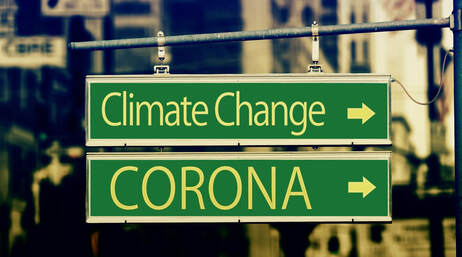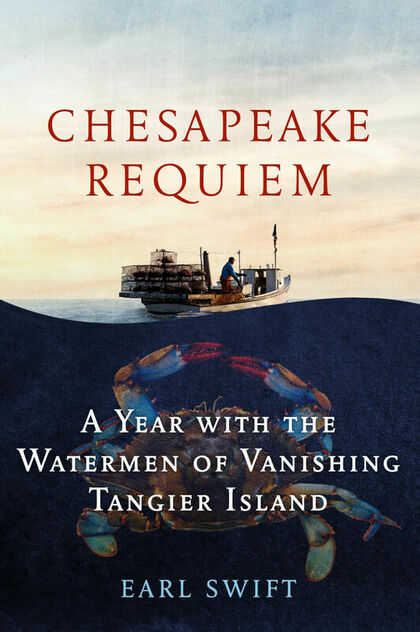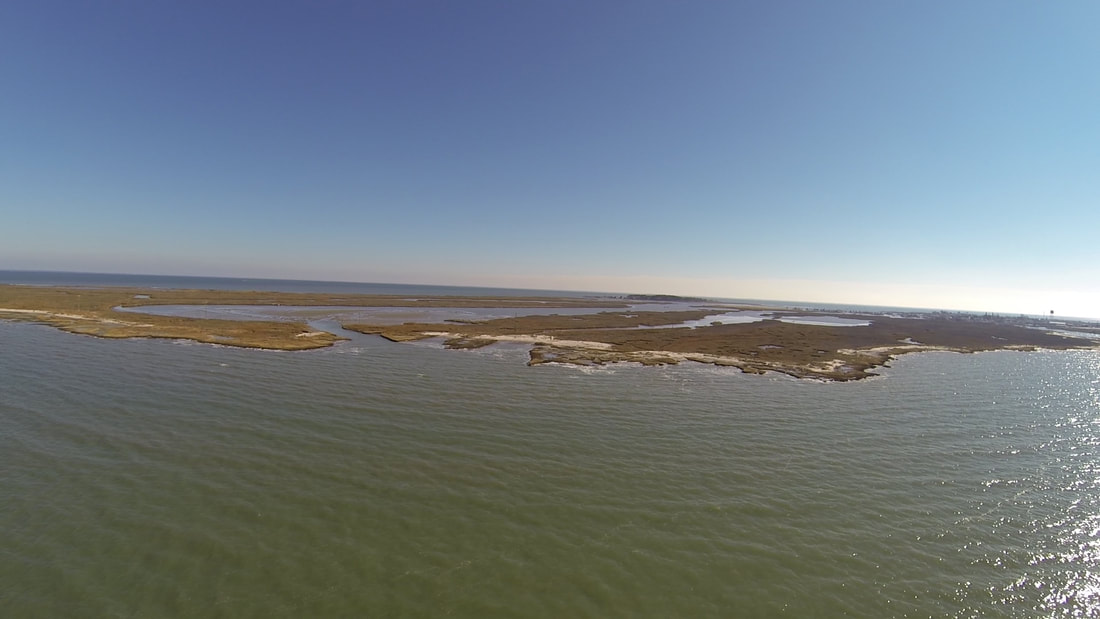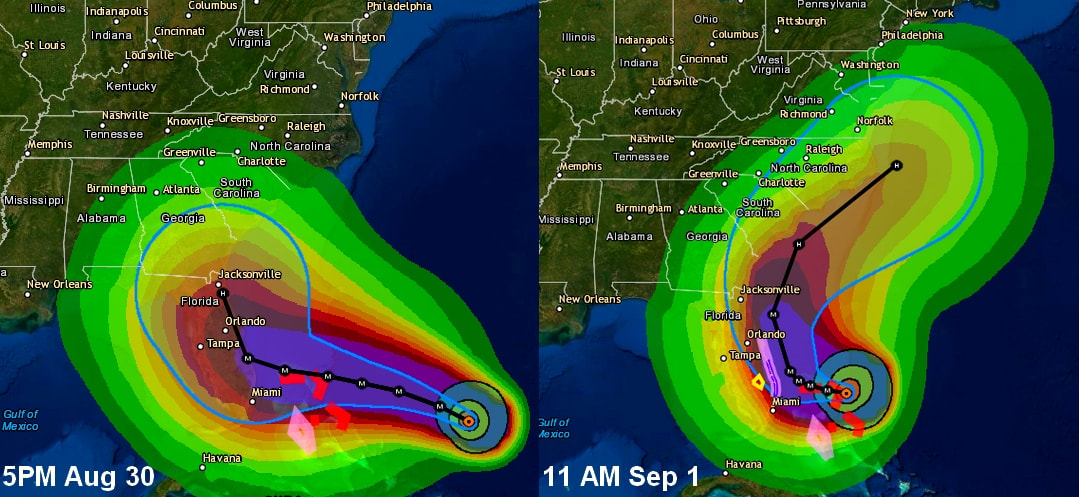|
8/13/2021 How to Deal with Opposition to Vaccination: Lessons from Addressing Climate Change DenialRead NowI came across an interview that journalist Bill Moyers did with Christian climate scientist Katherine Hayhoe back in 2014. The topic of their conversation is about the particular situation of Evangelical Christians in the United States as it relates to denial of climate change, but I believe the interview is remarkable because of the broader applicability of Dr. Hayhoe’s ideas as to why denial of many issues has been embraced by various communities and what can be done about it. You can watch the interview in the video above, but I will provide a recap of the major points of the interview. Dr. Hayhoe’s argument is that climate change is a hot button issue for many people because they feel it threatens all that they hold dear. However, what people reject about climate change is not so much the science but the solutions. Climate change is something that affects the community, and as such, efforts to deal with climate change require large numbers of people to work together, which means that the government has to be involved. But opposition to government is deeply rooted in the American psyche, and any legislation to limit what people can do or use is viewed with mistrust. Thus, climate change has become a casualty of much larger societal issues. This has been compounded by the fact that people have been lied to by those in whom they deposited their trust. On the one hand, the leaders who many of these people trust because they share their values, have told them that climate change is a hoax, or that it’s real but it’s not a big deal and nothing has to be done about it. Or in the absence of clear leaders, political and media personalities who don’t like the solutions to climate change have stepped in. And because these individuals say the same things that people believe with regards to many other issues, the people put their trust in them. On the other hand, the spokespeople for the opposite point of view have often been scientists who do not share the values of the communities they are addressing. People will not believe messengers whom they do not trust because they perceive them as not sharing their values. The remedy to this situation will not come from more information and more science, but rather from dealing with who we are as humans and how we function politically. Dr. Hayhoe says that, although caring about the climate is consistent with who people are as Christians, we have increasingly confounded our politics with out faith. Instead of allowing faith to determine our attitudes to political and social issues, we are allowing our political party to dictate our attitude towards issues that are clearly consistent with who we are. Finally, Dr. Hayhoe says that everyone has a list of things they care about such as the health of their kids, job security, the cost of living, faith etc., and climate change should not be viewed as one more thing to put on the list that competes with the others because climate change is already affecting the top things on everyone’s list. Climate change is affecting the things most people care about, love, and hold dear.  There are other aspects to the interview, but the ones I’ve mentioned above are those that I think are more generalizable to other situations where misinformation and social dynamics are getting in the way of people accepting and acting on a reality. One possible such situation is COVID-19 vaccine denial. Despite overwhelming evidence that the COVID-19 vaccines are safe, effective, and necessary, there is a certain proportion of the population of the United States that refuses to accept the vaccine. In parallels with climate change deniers, the sector of the population opposed to vaccination tends to be conservative and distrusting of government. In another parallel to climate change denial, this group of people tends to listen to media that reinforce their fears feeding them misinformation about vaccines. At the same time, this group of people is distrusting of what scientists say about vaccines, and especially of those scientists associated with the government. Like the evangelicals who have allowed their politics to replace their faith in guiding them with regards to climate change, the vaccine deniers have allowed their politics to replace their common sense and instinct of self-preservation when it comes to vaccines. And like climate change deniers, vaccine deniers have a list of things they hold dear and care about, and COVID-19 has probably affected every single item on the top of their lists, from the health of people they admire, acquaintances, friends, and family, to the impact on the economy. Dr. Hayhoe advocates finding trusted messengers within the evangelical community (people who are like them, such as she is) to spread the message that we need to act on climate change. This is indeed a strategy that is currently being pursued in the case of vaccine denial. The government is trying to recruit media personalities and local respected leaders to talk in favor of vaccination. But I think we can go about finding these trusted messengers in an additional way which relies on another parallel between COVID-19 and climate change. Much like climate change, COVID-19 affects everyone, and there is a growing list of vaccines deniers, who have been seriously ill or died due to the virus. The people who listened to these vaccine deniers have now been knocked back to their senses in the most brutal of ways. And I think that their stories should be used to snap vaccine deniers from the stranglehold that their politics have on their common sense and instinct of self-preservation. And unlike climate change, there is no ambiguity as to the cause of the harm. If someone loses their property, a friend, or a loved one to rising sea levels or a fire or a hurricane, they can always be told that there is no direct proof that climate change caused it. But if someone dies due to COVID-19, that reality cannot be denied. So, find out who are those vaccine deniers that were harmed by COVID-19 and seek out their audiences, their acquaintances, their friends, and their families, and ask them to tell their story to those in their communities and to champion vaccination. Every serious vaccine-preventable COVID-19 illness or death among the community of vaccine deniers is a tragedy. But the silver lining is that these illnesses and deaths will generate a group of people willing to open their minds to vaccination and promote it. I think these people have an important role to play in stopping vaccine denial. Image from pixabay by Gerd Altmann is free for commercial use and was modified from the original.
0 Comments
This blog is supposed to be a science blog, so I try to keep it non-political. Science is the best method we have to discover the truth about the behavior of matter and energy in the world around us. Furthermore, science makes it possible for human beings of very different religious, philosophical, and social persuasions to come to an agreement on issues pertaining to the natural world. In order to keep this capacity, science should not intrude into those areas that are not of its competence such as values, morals, ethics, religion, political views, etc. However, this is a two-way street. Politics, religion, and other disciplines of human thought should not intrude into the scientific realm and thwart the scientific quest for truth. So what are scientists to do when this happens? Hurricane forecasting is a difficult scientific discipline. There are many variables involved in predicting the path of hurricanes, and many of these variables are not yet known or even understood well enough to make long-term predictions. These limitations are well known and are woven into our current hurricane forecasting system. Citizens are always informed of the likelihood that a hurricane will affect certain areas and to what extent to the best of the abilities of the scientists and the effectiveness of the technology at their disposal. However, it is imperative to understand that the prediction of the path of a hurricane can sometimes change from one day to another. Political personalities or celebrities that are followed closely by millions of people can play an important potential role in the preparedness against an impending hurricane. These individuals can raise awareness quickly about the need for people to protect themselves and what they have to do. However, for this potential to be realized there needs to be close cooperation with weather scientists as well as reliance on the most up to date forecasts. This brings us to hurricane Dorian and President Trump’s tweet. The facts of this SNAFU are well known and you can read about them in several media outlets, so I will just gloss over the most salient aspects. On September 1 close to 11 AM Mr. Trump, tweeted that the state of Alabama would be among the states most “likely hit (much) harder than anticipated” by hurricane Dorian. It seems that Mr. Trump was basing his tweet on dated information from 5 PM on August 30 that included the possibility that within 5 days large areas of Alabama would have a 5-30% chance of experiencing sustained winds of 34 knots (39 mph), and the southeastern corner of the state would have a 5-10% possibility of receiving winds of 50 knots (58 mph). According to the Beaufort Wind Scale, a wind speed of 34 knots is the wind speed that will break twigs and small branches from trees and make walking difficult, whereas a wind speed of 50 knots can break or uproot trees and cause considerable building damage. However, by the time of Trump’s tweet, the predicted path of the hurricane had moved eastward and now only the southeastern corner of Alabama stood a 5-10% chance of experiencing sustained winds of 34 knots within 5 days. The inclusion of Alabama in Trump’s tweet and the language he used alarmed many people who read it or heard about it, and they started frantically calling the office of the National Oceanic and Atmospheric Administration (NOAA) in Birmingham, Alabama, which issued a tweet contradicting the president’s assertion. Over the course of the next few days, Mr. Trump defended his tweet with several pieces of evidence. One was an actual NOAA weather map that had been altered with a line drawn over Alabama. Another was one of the so called “spaghetti plots” that displayed a few potential hurricane tracks over Alabama. However, these devices are not weather forecasts. They are very preliminary and inaccurate plots that scientists use to make the cone plots of probability for forecasting the hurricane’s path. It seems that Mr. Trump did not know this. The most serious thing that happened was that NOAA’s management sent an agency-wide communication to all its weather service personnel telling them to “only stick with official National Hurricane Center forecasts if questions arise from some national level social media posts which hit the news this afternoon” and not to “provide any opinion.” This was widely interpreted by both present and former employees of NOAA as pressure from the higher ups not to contradict the president and received widespread condemnation. At the time of writing this blog, the latest reporting on the matter indicates that the president himself directed his staff to pressure NOAA’s management to disavow the Birmingham office, which the president denies. (Update) I want to state the following regarding this issue. Both the president and NOAA have the duty to serve the American people to the best of their abilities. This means that: 1) If the president is going to issue a communication regarding a potentially shifting weather phenomenon like a hurricane, he has the obligation of basing it on the most up to date information. For this, the president has to request to be briefed accurately and also educate himself on the subject. There is nothing shameful in this. A person can’t know everything. Additionally, it also means that the president should quickly admit mistakes and vow to ensure that they don’t happen again, as opposed to doctoring weather maps or producing dated or deficient maps to defend his claims. Admitting a mistake and taking efficient corrective actions is not a sign of weakness. We are all humans. We all make mistakes. People understand this and can relate to it. and 2) NOAA has a duty to not only provide education to the president, but also to coordinate with him to avoid confusion, recrimination, and loss of confidence in the agency. However, what the higher ups at NOAA did, which was essentially chastise their scientists for providing the most up-to-date information to the people of Alabama, is unacceptable. When the president of the United States speaks, or in this case, tweets, his words can have far-reaching consequences. The Birmingham office should be commended for their quick action in defusing a tense situation created due to a presidential communication based on deficient information. A modern society cannot face challenges effectively when the message delivered by science is nullified by political considerations. This is especially true when the well-being of human beings is at stake, as is the case with the possible path and impact of hurricanes, and is made more relevant today by the fact that global warming is contributing to the strengthening of hurricanes. Unfortunately, not only is Mr. Trump skeptical of climate change reports put together by his own scientists, but his administration has also been actively opposing the efforts by scientists to educate society to address this issue. The pursuit of the scientific truth is something to be cherished and promoted, not something to be met with reprimands, disavowal, disbelief, or ignored altogether. The Dorian Forecast Graphics by NOAA are in the public domain.  Most of the material in this post is taken out of the excellent book Chesapeake Requiem by the writer Earl Swift published in 2018. Mr. Swift lived for one year on the island of Tangier in the Chesapeake Bay. His book is a fascinating look at what is essentially the life and times of a small town whose economy is mostly reliant on the sea. He also describes in detail the rough life of the watermen, the men who risk their lives out in the water to catch the crabs and oysters consumed by Americans, and the ins and outs of their trade. But most importantly for the purpose of this blog, the author also extensively documents the plight of Tangier Island: it is disappearing. From the 1930s to the present day, two thirds of the island has been lost to the sea, and the pace of sea level rise in the Chesapeake Bay is accelerating. By the year 2050 Tangier may be by and large uninhabitable like other islands in the past that have experienced this fate in the Chesapeake Bay such as James Island, Sharps Island, and Holland Island. Because Tangier’s demise is happening in modern times when climate change has been identified as a worldwide problem, islands like Tangier are in a sense the “canary in the coal mine” of climate change, letting us envision on a small scale what will happen to coastal communities worldwide in the future. However, despite the certainty of these scenarios, scientists and climate change activists are mesmerized by the fact that the inhabitants of Tangier do not identify climate change as the root of their problems. The mayor of Tangier, James Eskridge, in 2007 had a face off in a televised town hall meeting with no other than environmental icon and former vice president, Al Gore. Mr. Eskridge explained his position (which turns out to be the same position of other communities in the Chesapeake Bay) that the problem they are facing is not sea level rise due to climate change, but rather erosion. He stated that he has a crab house business out in the water that was built in 1970, and in all this time he had not seen the sea-level rise that scientists claim to have occurred. Gore replied that scientists have documented that sea level in the Chesapeake Bay has indeed risen. However, he acknowledged that one of the challenges scientists have is translating this information to people in ways that are believable to them. Part of the issue is that the Tangier Island community is as conservative as they come. For example in 1946 when the congregation of the island’s only church attempted to remove a pastor deemed too progressive, the pastor left and founded a new church on Tangier. This event which split families apart led to widespread lawlessness ranging from acts of theft and vandalism to mobs of people throwing projectiles at the site of the new church’s building. The Methodist congregation in the island split again in 2011 over the belief that the broader United Methodist Church organization was becoming too liberal and did not support Israel enough. This led to a few tense years when some people in the island refused to talk to others. The town’s council once denied permission to Warner Brothers’ studio to film some scenes in Tangier of a romantic drama called “Message in a Bottle” because the movie contained cursing, alcohol drinking, and a sex scene. In the 2016 election, 87% of the population of Tangier voted for the now president of the United States, Donald Trump; an individual who has stated that climate change is a hoax.  Tangier Island Tangier Island In Tangier, the scientific establishment is in general viewed with distrust. This distrust has partly been fueled by climate change skeptic pundits who exploit conservative people’s fears by equating those who accept climate change and want to do something about it with atheists, liberals, and socialists. The people of Tangier would rather believe their own interpretation of what they have seen out on the water, than measurements taken by water stations, satellite data, or computer models. However, despite this, it is their belief in God and their ways which have allowed the inhabitants of Tangier to surmount many challenges. Among these are hurricanes have flooded and destroyed structures in the island (the highest part of the island is 4 feet above sea level), ghastly squalls, and other incidents that have taken the life of several watermen over the years, and fluctuations in the abundance of the crab and oyster populations and how much the market is willing to pay for them. The resilience of the Tangier community has been as remarkable as the strength of their faith. It could be argued that whether the cause of loss of land in Tangier is climate-change driven sea level rise or erosion is irrelevant, the important thing is to do something about it and save the island. Many have tried, but more often than not the plans for several projects to protect the island through the years have been bogged down in exasperating red tape and endless studies and studies of studies carried out by the US Corps of Engineers. Finally, the construction of a jetty to project Tangier’s Western shore was approved and will become a reality in this year, but many argue that in the long term this will not protect Tangier from the rising sea levels in the Chesapeake Bay. Some in the Tangier community think that the argument that climate-change driven sea level rise is to blame for their land loss problem and not erosion, is put forward to justify not doing anything about it. But the reality may be far crueler than that, and this is a quandary that many governments will have to face in the future. The quandary is: how much spending is justified to save a community? The island of Tangier has a population of 500 plus people. How many millions of dollars should be spent to save it as opposed to relocating the population elsewhere? In an era of mounting national debt and fiscal deficits, a lot of tough decisions will have to be made as coastal communities throughout the United States are threatened by rising sea levels. President Trump phoned the mayor of Tangier in 2017 and told him not to worry about sea level rise, adding that Tangier has been there for hundreds of years, and that he believes it will be there for hundreds more. Mr. Swift doesn’t seem to share that optimism, as we can surmise from the name of his book. Whether you are interested in science, government policy, or climate change activism, I highly recommend that you read it. I have only mentioned those aspects of the book that I deem relevant to this, a science blog. However, Chesapeake Requiem is much more than that. From the headstones of vanishing graves in old cemeteries being devoured by the sea to the ways of catching, classifying, cooking, and eating crabs, Mr. Shift describes for posterity a community that is now literally “living on a prayer”, a few decades away from oblivion. If you accept the reality of climate change, Tangier is the future, and it doesn’t look pretty. The image of the cover of the book Chesapeake Requiem is copyrighted and used here under the legal doctrine of Fair Use. The picture of Tangier from the US Army Corps of Engineers website is considered public information and may be distributed or copied. |
Details
Categories
All
Archives
June 2024
|

 RSS Feed
RSS Feed